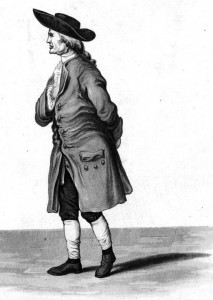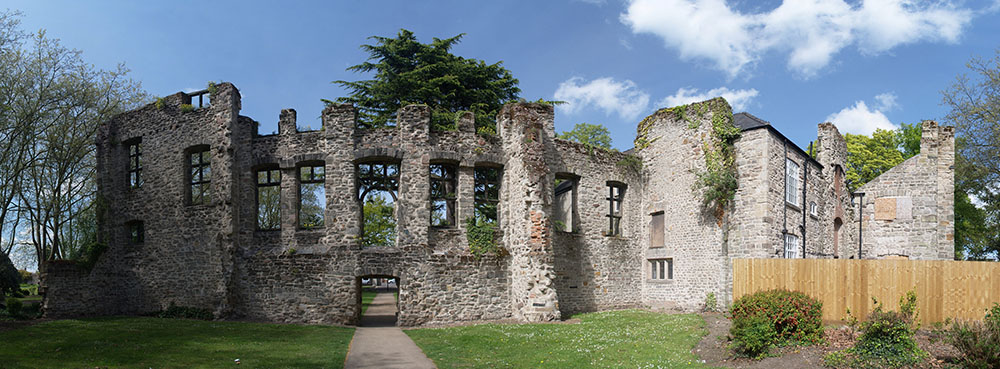SUNDAY, 7 NOVEMBER 2010
 The cavendish family can be traced back through eight centuries and fifteen generations of history. The Cavendishes have consistently produced a large number of prominent men and women including statesmen, patrons of the arts, sponsors of education, intellectuals and socialites, as well as one prime minister. It is unsurprising then that the ranks of the family should also have included a number of successful scientists, the most distinguished being the eccentric genius, Henry Cavendish.
The cavendish family can be traced back through eight centuries and fifteen generations of history. The Cavendishes have consistently produced a large number of prominent men and women including statesmen, patrons of the arts, sponsors of education, intellectuals and socialites, as well as one prime minister. It is unsurprising then that the ranks of the family should also have included a number of successful scientists, the most distinguished being the eccentric genius, Henry Cavendish.Henry Cavendish’s name would probably not appear on most people’s lists of great scientists. The reasons for this are bound up in his complex personality, his acute shyness and his unwillingness, or more properly his inability, to conform to the social norms of his time.
Cavendish was born in 1731. His mother, Lady Anne Grey, was the daughter of the Duke of Kent, and his father, Lord Charles Cavendish, was the son of the Duke of Devonshire. This meant that the young Henry entered the world as a member of two highly wealthy and influential families. His mother died young and he had a sheltered childhood, living with his father in London. As a result, very little is known of his early years.
His father was a prominent politician who later went on to be a successful scientist. Science funding at that time was sparse and so the subject was often disproportionately dominated by those who could afford to build and maintain their own laboratory. Being a wealthy man, Lord Charles was able to conduct a number of important experiments on meteorology, as well as invent a new type of thermometer – for which he was awarded a medal by the Royal Society. As a child, the young Henry was often seen in the garden helping his father with experiments.
At age 18, Cavendish was accepted to the University of Cambridge, but he left three years later without taking his exams. He returned to live at home, and remained there until the death of his father, more than 30 years later.
It was during this period of his life that he first became renowned for his unusual behaviour. He spoke with a shrill, high-pitched voice, but mostly avoided conversation altogether, and was embarrassed in the presence of strangers, especially women. A self-confessed solitary man, he left notes for his servants on a daily basis in order to avoid meeting them. Any female servant seen by him was dismissed immediately. He had little interest in his appearance, and was known for always wearing the same faded violet coat and a three-cornered hat, a style that had not been fashionable since the previous century. When these clothes became worn out, he simply ordered identical copies to be made.
His only social outlet was the regular meetings of the Royal Society, for he was in great demand by other scientists, who sought his knowledge and advice. Surprisingly, when it came to speaking on matters of science, he was said to lose his inhibitions. The chemist Humphrey Davy even described him as “luminous and profound”.
Cavendish made major contributions to a wide range of scientific disciplines. In 1766 he became the first to isolate hydrogen gas and discover that water was made from hydrogen and oxygen. Soon after, he demonstrated that air is composed of oxygen, nitrogen and a tiny percentage of other obscure gases. His research also extended to astronomy, meteorology, thermodynamics and the nature of electricity. In one experiment, where he was studying the electrical impulses given off by the torpedo fish, he measured the strength of the electricity by shocking himself and recording the level of pain he felt.
It is a testament to the weight of his research that Cavendish was so admired by his peers, since much of his behaviour bordered on the socially unacceptable. Cavendish had no interest in promoting or applying his research to practical uses at a time when scientists were expected to be pioneers in improving the human condition. A number of academics, including the neurologist Oliver Sacks, have noted that he almost certainly had Asperger’s syndrome; however, the lack of information about his childhood has led others to be more sceptical, and thus the debate continues even today.
Whether he suffered from Asperger’s or not, Cavendish was, at the very least, an eccentric. The term ‘eccentric’ was often reserved for those with wealth, as they alone could afford to behave so strangely and avoid being condemned to the asylum. In any case, the link between eccentricity and wealth certainly applied to Cavendish. Around the time of his father’s death, Cavendish inherited vast sums of money from a number of different sources, quickly making him the richest man in England. His wealth and eccentricity appeared to grow together as he used the money to build himself a new house, which he fitted out as a laboratory, complete with a second staircase that allowed him to avoid his housekeeper. He also invested in a library which was open to all serious scholars, but had it built four miles from his residence so that he could avoid meeting anyone who used it.
Towards the end of his life, Cavendish carried out the experiment for which he would become best known. Using a torsion balance, he measured the tiny gravitational attraction between two lead spheres. This calculation allowed him to work out the strength of gravity, and from there, to extrapolate and calculate the density of the earth. Cavendish had a better name for it: he called it “weighing the world”.
Cavendish died in 1810 at the age of 79. He left behind a large estate and a huge collection of unpublished papers. Both eventually made their way, almost a century later, to one of his descendants, the 7th Duke of Devonshire, who personally funded a new laboratory of physics at the University of Cambridge. When the Duke asked for the unpublished papers to be examined, it was found that – without telling a soul – Cavendish had made many seminal discoveries. These included Ohm’s Law, Dalton’s Law of Partial Pressures, Coulomb’s Law, and Charles’s Law of Gases. The credit for all of these were given to other scientists who made the discoveries much later. Following these revelations, Cambridge’s newly founded physics department was named the Cavendish Laboratory in his honour.
As an intellectual, Cavendish changed the landscape of science. At the beginning of his career, scientific publications consisted largely of short and obscure reports without any underlying themes or relevance. Almost as if to make a point, Cavendish’s last major publication on “weighing the world” took up 58 pages in the Royal Society’s Philosophical Transactions. This anecdote sums up his instrumental role in building the brave new scientific civilisation that would go on to define the Victorian era of discovery.
The Cavendish biographer John Pearson perhaps puts it best when he describes Henry Cavendish as “a scientific genius, the most original, wide-ranging British man of science since Isaac Newton”.
Anders Aufderhorst-Roberts is a PhD student in the Department of Physics

